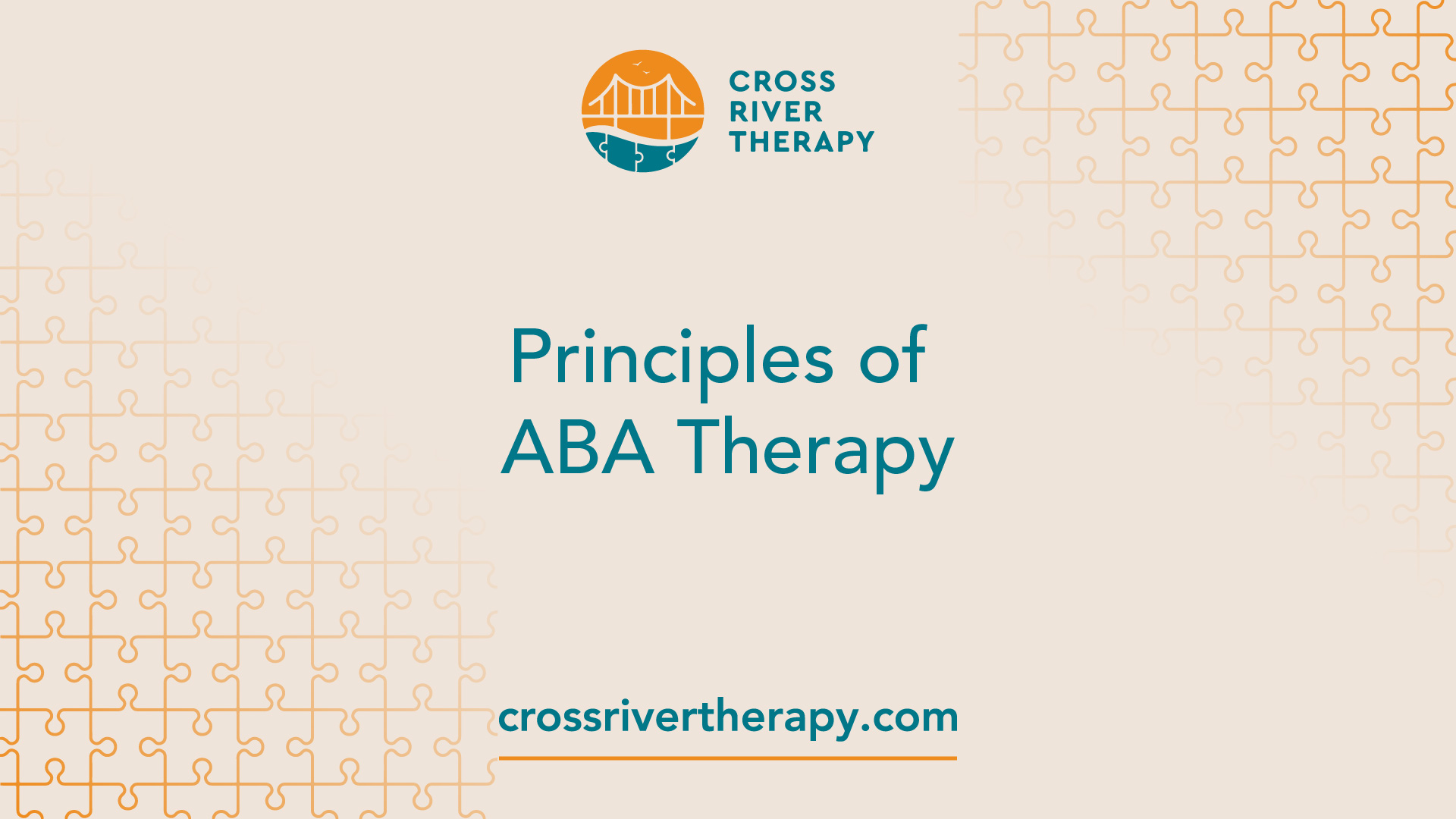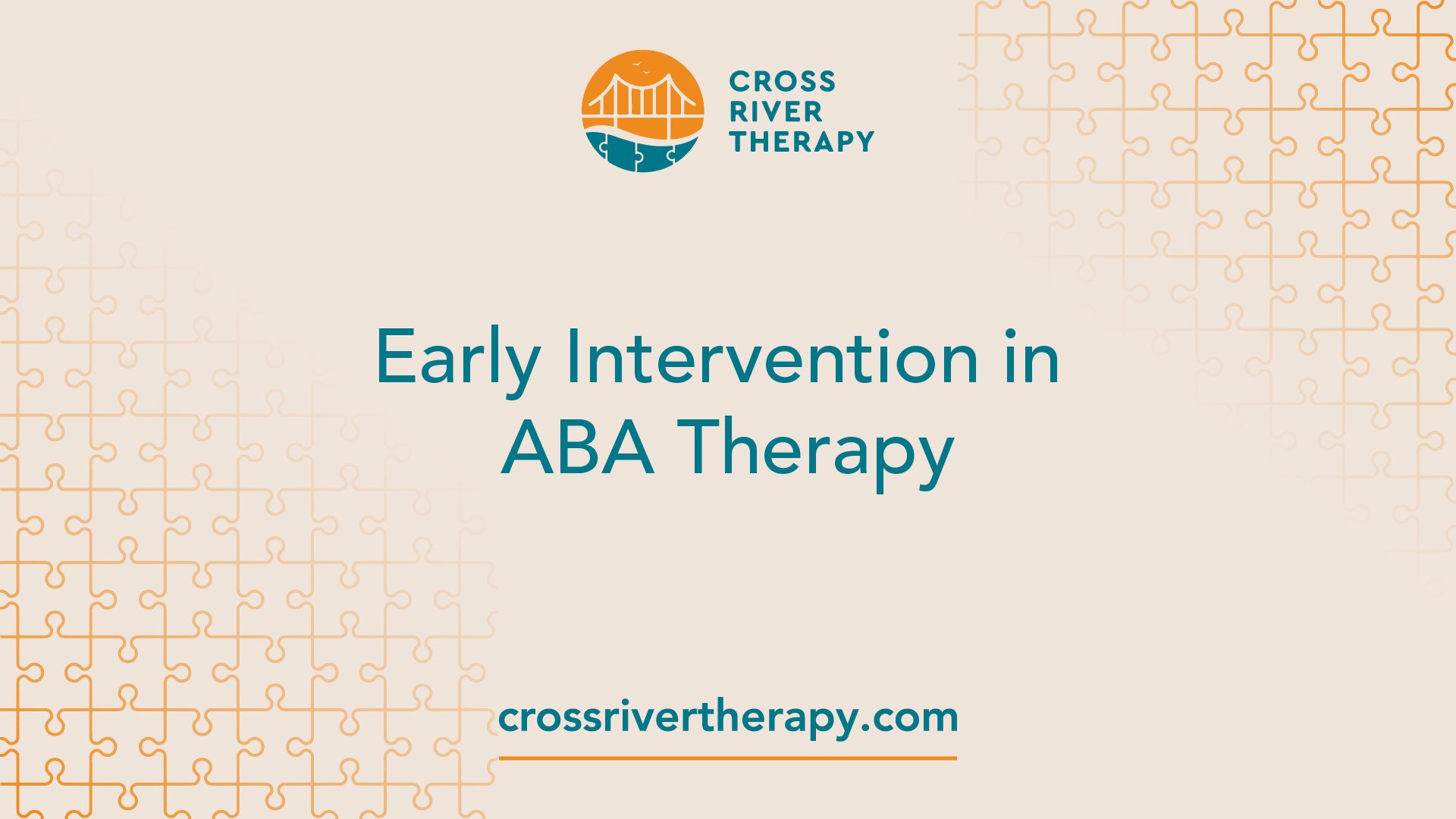What Are the Evidence-Based Practices in ABA Therapy?
Find out how ABA therapy utilizes evidence-based practices for effective and reliable treatment outcomes.

Understanding ABA Therapy
ABA therapy, short for Applied Behavior Analysis, is a widely used and evidence-based therapy for children on the autism spectrum. It is supported by seven dimensions based on scientific research that aim to encourage behavior changes and improve daily living.
By understanding the basics of ABA therapy and the role of Board Certified Behavior Analysts (BCBAs), parents can make informed decisions regarding their child's therapy.
Basics of ABA Therapy
ABA therapy utilizes principles from the science of behavior to enhance behavior. The term "applied" signifies that the therapy focuses on making socially significant changes in individuals' lives. It is based on the understanding that behaviors can be shaped through a systematic and individualized approach.
ABA therapy targets a wide range of behaviors, including communication skills, social skills, self-help skills, and academic skills.
The therapy is highly individualized and tailored to each child's unique needs. It involves breaking down complex skills into smaller, manageable steps to facilitate learning and progress.
ABA therapy can be delivered in various settings, such as homes, schools, or clinics, depending on the child's requirements and goals.
Role of Board Certified Behavior Analysts
Board Certified Behavior Analysts (BCBAs) play a crucial role in ABA therapy. They are trained professionals with expertise in behavior analysis.
BCBAs assess, analyze, and provide interventions for individuals to address behavioral issues and promote positive behavior changes.
BCBAs conduct assessments to evaluate a child's behavior and skills. They use various assessment tools and techniques to gather data and formulate a comprehensive understanding of the child's strengths and areas that require improvement.
Based on the assessment results, BCBAs design individualized treatment plans and strategies that target specific goals and behaviors.
Throughout the therapy process, BCBAs closely monitor progress, make data-driven decisions, and adjust interventions as needed. They collaborate with other professionals, such as speech therapists, occupational therapists, and educators, to ensure a holistic approach to the child's development.
BCBAs also play an important role in training and supporting parents and caregivers. They provide guidance on implementing behavior management techniques and strategies at home and in other environments.
By equipping parents with the necessary tools and knowledge, BCBAs empower them to support their child's progress outside of therapy sessions.
In summary, ABA therapy is a comprehensive and evidence-based approach to promoting positive behavior changes in individuals with autism. BCBAs play a vital role in assessing, analyzing, and providing interventions to support individuals and their families throughout the therapy process.
By working together with BCBAs, parents can actively participate in their child's therapy journey and help maximize the benefits of ABA therapy.
Principles of ABA Therapy

ABA therapy, also known as Applied Behavior Analysis therapy, is a scientifically validated approach to understanding and modifying behavior. It focuses on enhancing behavior using principles from the science of behavior, with the term "applied" indicating making socially significant changes [1].
Two key principles that guide ABA therapy are behavior modification techniques and the importance of consistency in ABA programs.
Behavior Modification Techniques
Behavior modification techniques are at the core of ABA therapy. These techniques are designed to systematically analyze and modify behavior to promote positive changes.
ABA therapists, often Board Certified Behavior Analysts (BCBAs), use a variety of strategies to target and shape behavior, such as positive reinforcement, negative reinforcement, and prompting/fading techniques.
Positive reinforcement involves providing rewards or incentives to increase the occurrence of desired behaviors. This can be in the form of verbal praise, tokens, or preferred activities.
On the other hand, negative reinforcement involves removing or avoiding aversive stimuli to increase the likelihood of a behavior being repeated. For example, if a child completes a task, they may be allowed to skip a less preferred activity.
Prompting and fading techniques are used to teach new skills or behaviors. Prompting involves providing cues or assistance to help an individual engage in the desired behavior.
As the individual becomes more proficient, prompts are gradually faded, allowing them to perform the behavior independently. This gradual fading helps to promote independence and generalization of skills across different settings.
Importance of Consistency in ABA Programs
Consistency is a vital component of ABA therapy. ABA intervention programs written by BCBAs must be run consistently by each technician or person involved in the therapy process, including parents. Consistency ensures that behavior modifications are effectively maintained and that progress is made over time.
ABA programs are designed with detailed treatment plans that can be easily followed by anyone involved in the therapy process. This includes parents, who play a crucial role in implementing ABA techniques at home.
By maintaining consistency across different environments, such as home, school, and community settings, individuals receiving ABA therapy can generalize the skills they learn and apply them in various situations.
Consistency also helps to establish predictable routines and expectations, which can be particularly beneficial for individuals with developmental delays. These individuals thrive in structured environments that provide clear guidelines and consistent consequences for behavior.
ABA therapy focuses on creating and maintaining such consistency to support skill development and behavior change.
By employing behavior modification techniques and ensuring consistency in ABA programs, individuals receiving ABA therapy can experience meaningful improvements in their behavior, communication, and overall quality of life. It is important for ABA therapists to continue to stay updated on evidence-based practices and adapt their techniques to best meet the needs of their clients.
Early Intervention in ABA Therapy

Early intervention is key when it comes to ABA therapy for individuals with autism spectrum disorder (ASD). Research has shown that starting ABA therapy as early as possible, preferably before the age of four, can have significant benefits for children's development, particularly in improving social and communication skills [1].
Benefits of Early ABA Therapy
The early implementation of ABA therapy has been recognized as crucial for achieving the best outcomes in individuals with ASD. This evidence-based approach aims to address the core deficits associated with ASD, promoting skill development and reducing challenging behaviors.
Studies have demonstrated that early ABA therapy can lead to significant progress in various areas of development. It has been associated with improvements in socialization, communication, expressive language, and adaptive learning skills.
Early intervention allows for focused and intensive therapy, which can have a profound impact on a child's overall development and their ability to reach their full potential.
Impact on Social and Communication Skills
One of the primary goals of early ABA therapy is to enhance social and communication skills in individuals with ASD. By targeting specific behaviors and teaching functional skills, ABA therapists work to improve social interactions, promote effective communication, and enhance overall social competence.
Research has shown that intensive, long-term ABA therapy can lead to significant gains in social and communication skills. This includes improvements in initiating and maintaining conversations, understanding nonverbal cues, and developing appropriate social behaviors.
By focusing on these areas, ABA therapy provides individuals with the tools and strategies they need to navigate social interactions, build relationships, and thrive in various social settings.
Early intervention in ABA therapy not only helps children with ASD acquire essential social and communication skills but also empowers them to develop the necessary tools for independent and fulfilling lives. It offers the opportunity to build a strong foundation for future growth, learning, and success.
By recognizing the importance of early intervention and the positive impact it can have on social and communication skills, parents can make informed decisions regarding their child's ABA therapy journey. Seeking ABA therapy services as early as possible can provide children with the best chances for achieving optimal development and reaching their fullest potential.
Ethical Considerations in ABA Therapy
When it comes to ABA therapy, ethical considerations play a crucial role in ensuring the well-being and progress of individuals receiving treatment. ABA practitioners adhere to the Ethics Code established by the Behavior Analyst Certification Board (BACB), which outlines principles and guidelines for ethical behavior in ABA therapy.
Let's delve into the ethics code and explore the importance of balancing compliance and ethical practices.
Ethics Code in ABA Therapy
The Ethics Code serves as a framework for behavior analysts to navigate ethical challenges and make informed decisions in their practice. It emphasizes the importance of benefiting others, doing no harm, and respecting the dignity and autonomy of individuals.
Upholding client rights is a fundamental aspect of the Ethics Code. Behavior analysts strive to ensure informed consent, where clients and their families have the right to be fully informed about treatment options, goals, procedures, risks, and benefits.
Respecting privacy and confidentiality is also crucial in protecting sensitive information shared during therapy sessions [3].
Balancing Compliance and Ethical Practices
To provide effective ABA therapy, practitioners must balance compliance with ethical considerations. While compliance with treatment plans and protocols is important, it should not overshadow ethical obligations towards the individuals receiving therapy.
A study published in PubMed suggests that a dominant form of ABA therapy for Autism Spectrum Disorder (ASD) may raise concerns regarding fundamental bioethical tenets, such as justice, nonmaleficence, and autonomy of children and parents. This is due to an overemphasis on compliance-based interventions and restrictive approaches.
To ensure ethical practices, behavior analysts should prioritize evidence-based practices [4]. This involves integrating the best available evidence with clinical expertise and client values and context.
Respecting individual differences and promoting the active participation of clients and their families in the treatment process are essential for aligning ABA therapy with bioethical principles [3].
By striking a balance between compliance and ethical considerations, behavior analysts strive to provide effective and ethical ABA therapy. Upholding the principles of the Ethics Code, ensuring informed consent, and respecting client rights are vital in creating a supportive and ethical environment for individuals receiving ABA therapy.
Evidence-Based Practices in ABA
In the field of Applied Behavior Analysis (ABA), evidence-based practices (EBP) play a crucial role in shaping effective and ethical therapy interventions. Understanding the importance of evidence-based ABA and aligning with bioethical principles ensures that individuals with autism receive the highest quality of care.
Importance of Evidence-Based ABA
Evidence-based ABA refers to the integration of the best available scientific evidence, clinical expertise, and individual client values and context to inform treatment decisions. This approach emphasizes the use of interventions that have been extensively researched and proven effective in improving outcomes for individuals with autism.
By relying on evidence-based practices, ABA therapists can have confidence in the interventions they provide and the positive impact it can have on their clients' lives. These practices are supported by research and have been shown to generate meaningful and lasting behavior change. They allow therapists to tailor interventions to the unique needs of each individual, increasing the likelihood of successful outcomes.
Moreover, evidence-based ABA provides a framework for responsible and competent behavior analysts to prioritize the well-being of their clients. By following established professional standards and guidelines, therapists can ensure that their practice is rooted in ethical behavior and decision-making, ultimately benefiting those they serve.
Aligning with Bioethical Principles
Integrating evidence-based ABA with bioethical principles is vital to ensure that therapy practices are not only effective but also respectful, responsible, and ethically sound. The Behavior Analyst Certification Board (BACB) has established an Ethics Code that outlines principles and guidelines for ethical behavior in ABA therapy.
Bioethical principles emphasize the importance of benefiting others, doing no harm, and respecting the dignity and autonomy of individuals. Behavior analysts should prioritize these principles in their practice, ensuring that interventions are designed to promote the well-being and development of their clients while respecting their rights and individual differences.
Upholding client rights in ABA therapy includes obtaining informed consent, providing clients with comprehensive information about treatment options, goals, procedures, risks, and benefits. Respecting privacy and confidentiality is also crucial to protect sensitive information shared during therapy sessions.
By aligning evidence-based ABA with bioethical principles, therapists can provide treatment that is not only effective but also respects the rights and autonomy of their clients. This approach ensures that therapy interventions are grounded in both scientific rigor and ethical considerations.
In the next section, we will explore some of the effective ABA techniques that have been supported by evidence-based practices, further highlighting the impact of evidence-based ABA in promoting positive behavior change and enhancing the lives of individuals with autism.
Effective ABA Techniques
When it comes to ABA therapy, there are several techniques that have been proven to be effective in helping children with autism develop and improve their skills. In this section, we will explore two key techniques: positive and negative reinforcement, and video modeling with prompting/fading.
Positive and Negative Reinforcement
Positive and negative reinforcement are fundamental techniques used in ABA therapy to teach children with autism appropriate behaviors. Positive reinforcement involves providing rewards or incentives when a desired behavior is exhibited, making it more likely for that behavior to occur again in the future.
This can include verbal praise, tokens, or small treats. By associating the behavior with a positive outcome, children are motivated to repeat the desired actions.
On the other hand, negative reinforcement involves removing or avoiding an unpleasant stimulus when the desired behavior is displayed. For instance, if a child completes a task, they may be allowed to avoid a less preferred activity or situation.
Negative reinforcement does not involve punishment but rather focuses on creating a motivating environment by eliminating aversive stimuli.
Both positive and negative reinforcement techniques are used to create a consistent and structured environment for children with autism. By consistently reinforcing appropriate behaviors, children learn to differentiate between acceptable and unacceptable actions.
This helps them develop new skills and behaviors that are more socially appropriate and functional in their daily lives.
Video Modeling and Prompting/Fading Techniques
Video modeling is an effective ABA technique that utilizes visual learning to help children with autism acquire new skills. By watching videos, children can observe and imitate appropriate social interactions, communication, and emotional expressions.
Video modeling provides a visual framework for learning, making it particularly beneficial for visual learners. The use of video modeling can enhance social skills, language development, and overall communication abilities.
Prompting and fading is another technique commonly used in ABA therapy. Prompting involves providing cues or assistance to guide a child through the steps of a desired behavior or skill.
This can include physical prompts, verbal prompts, or visual cues. As the child becomes more proficient in performing the behavior, the prompts are gradually faded away, allowing them to demonstrate independence and mastery of the skill. Prompting and fading techniques ensure a gradual transition from reliance on prompts to independent performance.
By combining video modeling with prompting and fading techniques, ABA therapists can effectively teach children new skills and behaviors. The visual learning provided by video modeling, paired with gradual prompts and fading, helps children with autism generalize skills in various settings and become more independent in their daily lives.
It's important to note that the effectiveness of these techniques may vary for each individual. A qualified and experienced ABA therapist will tailor the therapy to meet the specific needs of the child, taking into account their unique strengths and challenges.
To learn more about ABA therapy and its benefits, you can explore related topics such as ABA therapy and family support services, ABA therapy and autism awareness, ABA therapy and autism acceptance, and ABA therapy and developmental delays.
FAQs
How is ABA therapy tailored to individual needs?
ABA therapy is customized through individualized assessments and treatment plans that address specific behaviors and goals, ensuring that the therapy is relevant and effective for each person.
What qualifications should an ABA therapist have?
An ABA therapist should ideally be a Board Certified Behavior Analyst (BCBA) or hold similar credentials, with training and experience in applying evidence-based behavioral interventions.
How long does ABA therapy typically last?
The duration of ABA therapy varies based on individual needs and goals, often lasting several months to years with ongoing evaluations and adjustments to the treatment plan.
What are the benefits of ABA therapy?
Benefits include improved communication and social skills, increased independence in daily activities, reduced problematic behaviors, and overall enhanced quality of life.
Can ABA therapy be combined with other therapies?
Yes, ABA therapy can be integrated with other therapies, such as speech or occupational therapy, to provide a comprehensive approach to addressing various needs and promoting overall development.
References
[1]: https://www.autismparentingmagazine.com/aba-principles/
[2]: https://www.magnetaba.com/blog/is-aba-therapy-evidence-based
[3]: https://www.achievebetteraba.com/blog/aba-ethical-considerations



